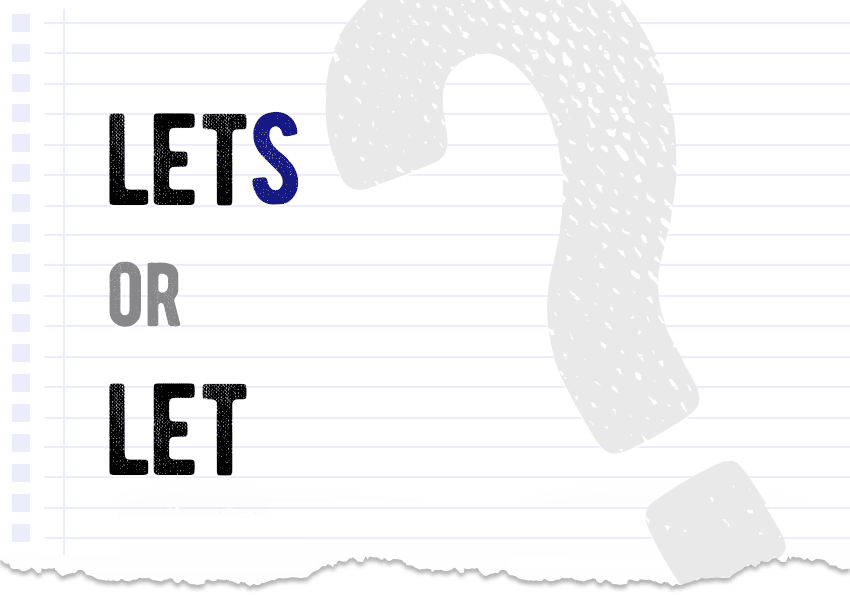Lets or let’s – which is correct?
How to decide which one to use, lets or let’s, and what’s the difference? Here’s everything you should know when choosing between lets and let’s.

Lets or let’s – same or different?
There is no incorrect option, because the difference between lets and let’s is purely grammatical. The two forms are variants of the same word used in different situations. That word is, of course, the verb let, which is most often used to mean to allow, but can also be a part of various phrases. Note that the pronunciation of both of these variants is identical, so you can only distinguish one from the other in writing or in context.
Lets or let’s? The story behind lets
Let’s start with lets. As you may know, one of the present tenses – the Present Simple – requires the -s ending in the third form singular (he, she, it). This is also true in the case of the verb let, which means that sometimes it has the -s ending added to create lets and indicate the grammatical person in that tense (see examples below).
The origins of let’s
Did you pay attention to the first sentence of the previous paragraph? It’s an example of the use of let’s. The apostrophe changes a lot here, because let’s is short for ‘let us’. So if I’d written ‘let us start’, it would mean the same thing – I would be encouraging myself and you, the reader, to do something (in this case: to discuss the other word first). Let’s is imperative by nature, it suggests an action to be taken.
Why does this phrase contract like that? The best theory we have also applies to all the other contractions, like doesn’t, what’s, would’ve, etc. – over time, the words melded together, because they were used a lot in the same configuration. And who has time to say the whole thing, right?
Lets or let’s? It’s all clear! Examples in sentences
She’s a bit of a pushover, lets people walk all over her.
Salon, Aug 31, 2022
But when tears come, he lets them flow.
New York Times, Aug 24, 2022
There’s a lot to eat, so let’s start early.
New York Times, Jul 12, 2022


